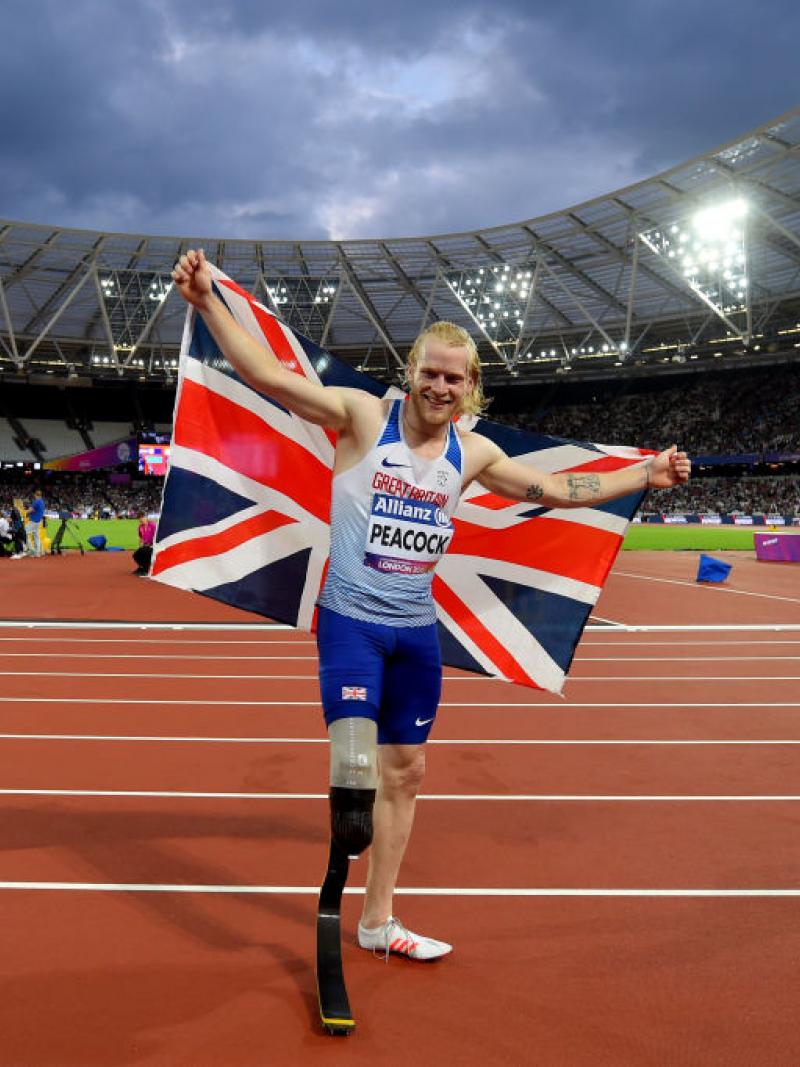From blades to ballroom: Jonnie Peacock talks Strictly Come Dancing
Para athletics superstar admits he gets more nervous over salsa than sprinting 10 Nov 2017“I wanted to come on and break down perceptions – to try and prove some people wrong who might think that someone with one leg is not going to be able to pivot, or do a certain step. I want to go out and prove how well people can do things.”
In part one of our exclusive interview with Paralympic and world 100m T44 champion Jonnie Peacock, the Briton talks about his ground-breaking appearance on a prime-time television dance show.
World and Paralympic champion Jonnie Peacock isn’t ready to swap his spikes for sequins yet.
Eight weeks into British television’s prime-time Saturday night series ‘Strictly Come Dancing’ - which sees celebrities matched up with a professional dancer to perform in front of a panel of judges, with a public vote to decide their fate - Peacock admits that he still finds dancing more nerve wracking than a major 100m final.
“When you stand on the start line of a 100m final you feel prepared, you feel ready. I’m not really ever that nervous at all – I think it’s because I’m so focussed.
“The bigger the race, the less nervous I get. But when you stand on that dancefloor it’s very rare that you feel that prepared,” admitted Peacock, who has taken a year off athletics with the intention of returning to competition in 2019.
“When I stand on the dancefloor I just don’t feel as confident. That adds to the nerves when you are doing something completely out of your comfort zone.”
Still, the 24-year-old, who is partnered with South African professional dancer Oti Mabuse, has already exceeded his own expectations on Britain’s most famous dancefloor.
“My expectations were incredibly low. I still think there are certain dances I’m not suited to, but I definitely surprised myself in a way because I’d never danced at all before. I thought I’d be out week two or week three, so I’m incredibly happy just to get to this point,” he acknowledged.
With just three and a half days to perfect each dance before stepping out in front of a television audience of 10 million, it’s no wonder Great Britain’s top amputee sprinter feels the pressure.
Still, as an athlete, Peacock is used to working hard – but it’s not the physicality that he’s had to worry about.
“In terms of the training, I’m doing more, but it’s a lot more intense when I train for athletics so my body is actually holding up okay,” explained Peacock.
“It’s more the mental aspect. It’s having to constantly stay switched on – it’s like learning to do a perfect 100m sprint every single Monday, and you’ve got three and a half days to master it. There are just so many things to fix.”
Peacock’s new daily roster of pivots, kicks, spins and chassés is a far cry from what he is used to – running in a straight line – but he hopes that when he returns to the track he will benefit from what he has learned, with “more body awareness, and hopefully a little bit more body control so hopefully I can execute that technique a bit more.”
As the first Para athlete to take part in the show, Peacock also believes that he can play a part in increasing the awareness of disability to a wider audience.
“It’s normalizing it again,” he explained. “A massive part of it has to come from 2012. This is really part of that legacy - that’s how I see this. That was the first step of really starting to normalize disability and being treated as normal, being treated as sports people.
“For me it’s opening that new door for people who haven’t perhaps seen the Paralympics and aren’t aware of what people with disabilities can do.
“I wanted to come on and break down perceptions – to try and prove some people wrong who might think that someone with one leg is not going to be able to pivot, or do a certain step. I want to go out and prove how well people can do things.”
Peacock has already proved how well he can adapt – from blades to ballroom. The sequins suit him too, no matter what he thinks.

 Facebook
Facebook
 Instagram
Instagram
 Twitter
Twitter
 Youtube
Youtube



